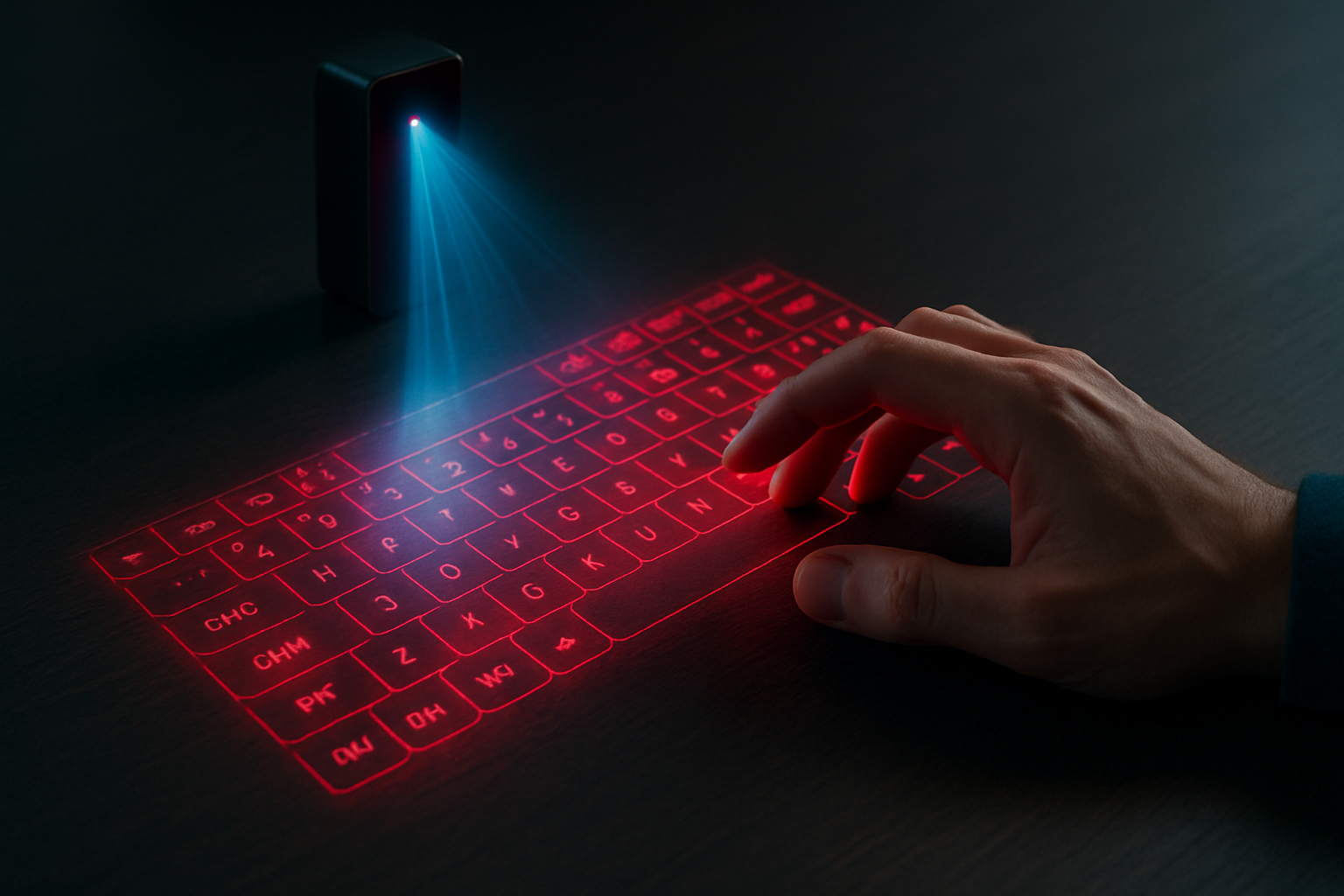Holographic Keyboards: The Future of Typing
In a world where technology continually pushes the boundaries of what's possible, holographic keyboards are emerging as a groundbreaking interface that could revolutionize how we interact with our devices. This cutting-edge technology, once relegated to the realm of science fiction, is now inching closer to reality. As we explore the potential of these ethereal input devices, we'll delve into their current state, the challenges they face, and the transformative impact they could have on our digital lives.

The Genesis of Holographic Keyboards
The concept of holographic keyboards isn’t entirely new. Early prototypes date back to the early 2000s, with companies like VKB and Celluon pioneering the technology. These initial offerings used laser projection to create a visible keyboard and infrared sensors to detect finger movements. However, they were plagued by issues such as poor accuracy and a lack of tactile feedback, which limited their adoption.
Recent Advancements in Projection Technology
In recent years, significant strides have been made in projection technology, breathing new life into the holographic keyboard concept. Modern iterations utilize advanced laser systems and sophisticated algorithms to create more stable and responsive projections. Some prototypes even incorporate haptic feedback through ultrasonic waves, simulating the sensation of pressing physical keys.
The Challenges of Typing on Light
Despite these advancements, holographic keyboards still face substantial challenges. The lack of physical keys makes touch-typing difficult, and users often report decreased typing speed and accuracy compared to traditional keyboards. Additionally, the technology is highly dependent on lighting conditions, potentially limiting its usability in certain environments.
Integration with Emerging Technologies
The true potential of holographic keyboards may lie in their integration with other emerging technologies. For instance, pairing them with augmented reality (AR) glasses could create a fully immersive computing experience. Imagine working on a virtual desktop that exists only in your field of vision, typing on a keyboard that appears at will.
The Market Potential and Price Points
As with any emerging technology, the initial cost of holographic keyboards is expected to be high. Current prototypes and limited production models range from $200 to $500, placing them firmly in the premium category. However, as the technology matures and production scales up, prices are likely to decrease, potentially reaching the $100-$200 range within the next five years.
Applications Beyond Traditional Computing
While the immediate focus is on replacing traditional keyboards, the applications of holographic input technology extend far beyond personal computing. In healthcare, for example, holographic interfaces could allow surgeons to access patient information without touching physical surfaces, reducing the risk of contamination. In industrial settings, workers could interact with complex machinery through projected interfaces, enhancing safety and efficiency.
The Environmental Impact
One often overlooked advantage of holographic keyboards is their potential environmental benefit. By eliminating the need for physical hardware, these devices could significantly reduce electronic waste. Additionally, the absence of moving parts could lead to longer lifespans and less frequent replacements, further reducing their environmental footprint.
User Adaptation and Learning Curve
As with any new interface, there will be a learning curve associated with holographic keyboards. Users accustomed to physical keys may initially struggle with the lack of tactile feedback. However, proponents argue that younger generations, raised on touchscreens, may find the transition more natural. As the technology improves, we may see a shift in typing techniques and ergonomics.
The Road Ahead
While holographic keyboards are still in their infancy, the potential for this technology is immense. As we move towards more mobile and flexible computing environments, the ability to conjure a full-sized keyboard out of thin air could be transformative. However, for holographic keyboards to truly succeed, they’ll need to overcome current limitations and offer a typing experience that rivals or surpasses traditional keyboards.
As we stand on the brink of this technological frontier, it’s clear that holographic keyboards represent more than just a novel input method. They symbolize a shift towards more intuitive and adaptable human-computer interactions. While challenges remain, the promise of a world where our interfaces are as fluid and dynamic as our imaginations is tantalizing. The journey from science fiction to reality is well underway, and the future of typing may very well be written in light.





